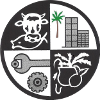PAPUA New Guinea has fallen from grace in a big way, as reflected in the 2014 RESOURCESTOCKS World Risk Survey.
In the most comprehensive World Risk Survey yet undertaken, PNG slid from 30 last year to 61.
PNG was among more than 70 countries rated according to financial and social risk, green and red tape, land access and claims, infrastructure, civil unrest, natural disasters and labour relations.
Of the countries rated, only the Democratic Republic of Congo, Zimbabwe, Venezuela, Somalia and Pakistan were ranked below PNG.
PNG was rated 30 in 2011, 59 in 2012 and regained its spot at 30 last year.
This year PNG was ranked 2.26 for financial risk, 2.1 for sovereign risk, 2.32 for land access and 2.37 for infrastructure.
Respondents scored PNG 1.82 for green tape, 2.61 for red tape and 2.09 for social risk while its civil unrest ranking was just 1.81.
Labour relations were scored at 1.66.
By comparison, last year resource sector respondents scored PNG 2.52 for financial risk, 2.78 for sovereign risk, 2.53 for land access and 2.75 for infrastructure.
PNG scored 2.25 for green tape, 2.6 for land claims, 2.85 for red tape and 2.56 for social risk, while the country was ranked 2.1 in civil unrest category and 2.02 in the country’s labour relations ranking.
While the higher scores imply greater risk, the vastly reduced ranking is thought to reflect uncertainty around PNG’s politics, including a corruption saga that resulted in a warrant being issued for the arrest of Prime Minister Peter O’Neill.
With the ongoing political fallout, analysts have expressed concerns of the impact on PNG’s reputation as an investment destination despite positive press coverage surrounding the PNG LNG project’s first export of gas.
PNG’s B1 credit rating was reaffirmed by Moody’s Investor Services following the start of PNG LNG exports but the ratings agency also stated concerns about the government’s growing debt.
Moody’s evaluated PNG’s institutional strength as “very low”, earning only two on a scale of 15, while the agency also stated that “transparency surrounding off-budget and public-sector enterprise borrowing was lacking”, leaving debt levels unclear.
Meanwhile, PNG’s southern neighbour, Australia, slid from sixth to 12th this year in the World Risk Survey rankings, with the unheralded New Zealand even squeezing past Australia’s guard at 11th.
New Zealand has a long history of mining, including coal, gold, silver, phosphate, limestone and iron sands and perhaps its unsung strength is reflected in the country’s placing beating Australia’s.
Interestingly, Australia improved across every category, including financial risk (1.42) sovereign risk (1.1), land access (1.83), green tape (1.94), land claims (1.7), social risk (1.29), infrastructure (1.4) and labour relations (1.25), with negligible civil unrest (0.68) and natural disasters (0.74) results.
Its worst ranking was red tape at 2.2.
Oil giant Norway, which has reformed its mining regulations, won the survey this year, with Sweden, Namibia, the UK, Finland, the US, Chile, Canada, Botswana and Greenland rounding out the top 10.
Control Risks (Australia Pacific) managing director Jason Rance said the slow implementation of new policy, coupled with the country’s economic slowdown, was partly responsible for Australia’s rankings drop.
“The decline doesn’t mean that the risk to resource companies is increasing in Australia but more that the country has stagnated – caught in a political stand-off – while other countries have pulled ahead,” Rance said.
Association of Mining and Exploration Companies CEO Simon Bennison toldRESOURCESTOCKS that the Abbott government’s abolition of the carbon tax was just one in a complicated matrix of red and green tape that miners and explorers had to deal with in Australia.
“It’s indicative that we’ve got a lot more work to do,” Bennison said.
“We’re in a phase of trying to decrease duplication and all the red tape.
“A lot of CEOs have had it highlighted to them that there are still issues out there and governments need to keep it up their priority list to ensure we keep working hard on a lot of these aspects.”
In the RESOURCESTOCKS World Risk Survey, Australia is a sum of its parts and on this front South Australia again tops the survey among Australian jurisdictions, as it has done since 2010.
While Western Australia topped the Fraser Institute’s latest poll, theRESOURCESTOCKS survey participants are yet to be convinced, ranking the sandgropers eighth behind Canada’s Manitoba and Quebec after SA.
Uncertainty about Queensland’s ongoing process of consolidating five resources-related acts into one continues to dog the northeastern state, with it ranking below even Victoria, which is saying something.
The Victorian government strongly supporting this year’s International Mining and Resources Conference in Melbourne shows it has its heart in the right place.
However, actions speak louder than words and in the hydrocarbon space the silence is deafening.
The Northern Territory, while growing in popularity, clearly still has some issues, including what juniors call the mishandling of its environmental levy and the infrastructure to support its vast geography.
Cellar-dweller New South Wales also clearly has plenty of work to do in both the minerals and hydrocarbon spaces.
This article was kindly provided by www.pngindustrynews.net

